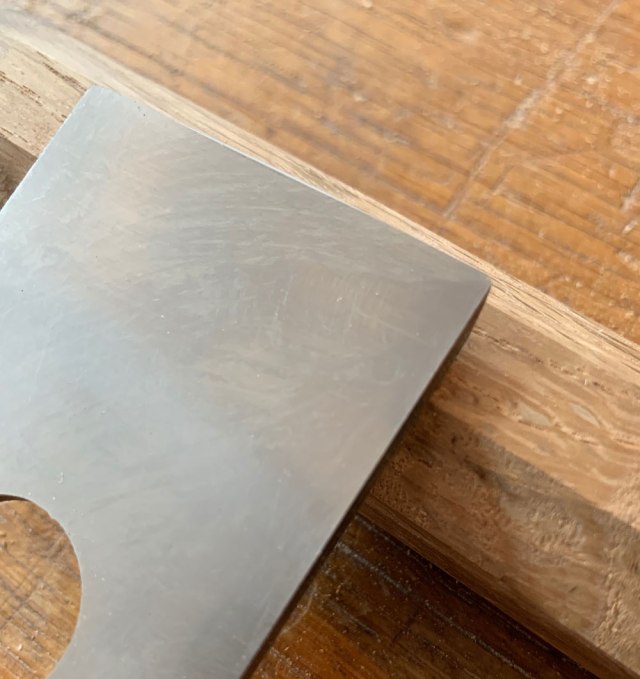
If the corners of a handplane’s cutter are not supposed to cut wood, then I remove them.
OK, let me put that a different way. Some handplanes are supposed to cut into corners: rabbet planes, shoulder planes, moulding planes and router planes (to name a few). So these planes need cutters with sharp corners so they will cut sharp corners in the wood.
Other planes are supposed to cut surfaces and not leave any sharp corners: bench planes, block planes and scraper planes (to name a few). So these planes need cutters that don’t create sharp corners in the wood – what some call “plane tracks.”
One way to avoid plane tracks is to make the cutting edge curved, such as in a scrub plane or jack plane. Another method is to round over the corners of the iron. My preferred method is to do both. I round over the corners of the plane iron and then sharpen a slight camber in its cutting edge.
The combination of these methods greatly improves the way the wood looks after I plane it.
So how to you round over the corners? After I grind an iron, I remove the corners on a diamond stone. You can use any stone (or sandpaper). The diamond stone is simply more durable than a waterstone or sandpaper.
After rounding the corners, I hone the iron and put considerable pressure on the corners to curve the cutting edge and blend my edge into the newly rounded corners.
There are other ways of accomplishing the same goal. And I’m sure your method works better than mine. But this is what I do.
— Christopher Schwarz